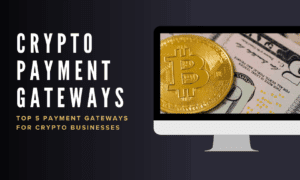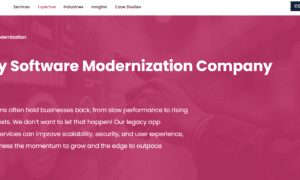Businesses increasingly rely on subscription-based models to ensure a steady revenue stream. Whether offering software-as-a-service (SaaS), streaming platforms, or online courses, the choice of a payment gateway plays a crucial role in seamless transactions. An efficient payment gateway enhances customer experience, reduces churn, and ensures secure transactions. However, not all gateways are created equal. Below are key features to consider when selecting a payment gateway for subscriptions.
Recurring Billing Support
The core function of any subscription-based business is recurring billing. A payment gateway must offer robust support for automatic payments, ensuring customers are charged at predetermined intervals without manual intervention. This feature reduces the likelihood of failed payments and enhances customer retention.
Additionally, look for a gateway that provides flexible billing cycles, allowing customers to choose monthly, quarterly, or annual subscriptions. The ability to handle prorated billing is another essential aspect, enabling users to upgrade or downgrade plans mid-cycle without complications.
Multiple Payment Methods
Customers have different preferences when it comes to payment options. A good payment gateway should support multiple methods, including credit and debit cards, digital wallets, direct bank transfers, and even cryptocurrencies. Providing various payment options reduces friction and increases the likelihood of successful transactions.
Moreover, enabling local payment methods tailored to specific regions enhances customer trust and boosts conversion rates. Some customers prefer digital wallets like PayPal, Apple Pay, and Google Pay, while others opt for traditional bank transactions. A diverse payment ecosystem caters to a broader audience and improves user experience.
Strong Security and Compliance Standards
Security is paramount when handling sensitive financial data. A reliable payment gateway should be PCI-DSS (Payment Card Industry Data Security Standard) compliant to ensure robust protection against fraud. Encryption technologies, tokenization, and two-factor authentication further enhance security.
Chargeback prevention tools and fraud detection mechanisms, such as AI-driven analytics and real-time monitoring, help mitigate risks. Additionally, ensure the gateway adheres to global compliance regulations like GDPR for European customers and PSD2 for enhanced authentication requirements.
Seamless Integration with Subscription Management Platforms
A payment gateway should integrate effortlessly with subscription management software and other business tools. Whether using Stripe, Recurly, Chargebee, or Zuora, seamless integration streamlines invoicing, automates dunning management, and reduces administrative burden.
APIs and plugins for popular e-commerce platforms such as Shopify, WooCommerce, and Magento simplify the implementation process. The ability to sync with accounting software like QuickBooks or Xero ensures smooth financial tracking and reporting.
Transparent Pricing and Low Transaction Fees
Cost is a critical factor when selecting a payment gateway. Some providers charge a flat monthly fee, while others take a percentage of each transaction. Understanding the pricing structure is essential to avoid hidden fees that could impact profitability.
Look for gateways that offer competitive transaction fees without compromising on essential features. Some platforms provide volume-based discounts, benefiting businesses with high transaction volumes. Comparing multiple providers helps in finding the best balance between cost and functionality.
Global Reach and Multi-Currency Support
Subscription businesses often cater to international audiences. A payment gateway should support multiple currencies and facilitate cross-border transactions seamlessly. This feature eliminates conversion hassles and allows customers to pay in their preferred currency.
Localized payment processing helps reduce transaction failures due to international restrictions. Additionally, dynamic currency conversion ensures that users see prices in their local currency, increasing trust and reducing checkout abandonment rates.
Automated Dunning Management
Dunning management refers to the process of handling failed payments and recovering overdue transactions. An efficient payment gateway should offer automated dunning strategies, such as sending reminders and retrying failed transactions at optimal times.
Proactive dunning management reduces involuntary churn and ensures continued revenue flow. Advanced gateways provide customizable retry logic, allowing businesses to set specific retry attempts before considering a subscription as canceled.
Customizable Checkout Experience
A smooth and branded checkout experience enhances user trust and minimizes cart abandonment. Payment gateways should offer customizable checkout pages that align with a business’s branding.
Options like hosted payment pages, embedded checkouts, and pop-up forms provide flexibility in integrating the gateway into an existing website. A frictionless checkout experience reduces distractions and increases the likelihood of completed transactions.
Detailed Analytics and Reporting
Data-driven decisions improve business performance. A payment gateway should offer comprehensive reporting tools, providing insights into transaction trends, customer behavior, and revenue analytics.
Features like real-time dashboards, subscription performance reports, and churn analysis help businesses optimize pricing strategies and identify potential issues. Integration with analytics platforms ensures better forecasting and financial planning.
Excellent Customer Support and Reliability
Technical issues can disrupt transactions and frustrate customers. Choosing a payment gateway with responsive customer support minimizes downtime and resolves payment-related issues efficiently.
Look for providers that offer 24/7 support through multiple channels, including live chat, email, and phone. Additionally, check for uptime guarantees and reliability metrics to ensure smooth operations without frequent service interruptions.
Conclusion
Selecting the right payment gateway for subscriptions requires careful consideration of multiple factors. From recurring billing support to security compliance and global reach, businesses must evaluate gateways that align with their operational needs. Prioritizing features like seamless integration, automated dunning, and a customizable checkout experience enhances customer satisfaction and revenue growth. By choosing a payment gateway with the right features, businesses can streamline payments, reduce churn, and create a seamless subscription experience for customers worldwide.



































